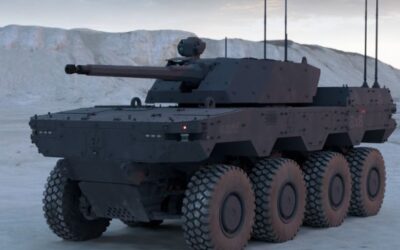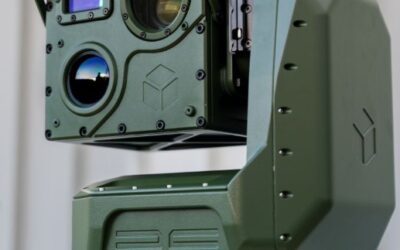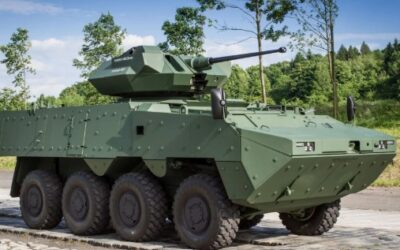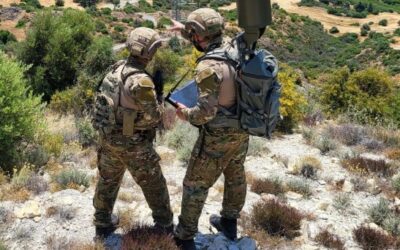Milrem Robotics has unveiled the HAVOC 8X8 Robotic Combat Vehicle (RCV), a next-generation autonomous platform.

The US Air Force has selected Northrop Grumman to develop the Stand-in Attack Weapon (SiAW), as the company announced.
Under a contract worth around USD 705 million, Northrop Grumman will further develop the weapon system over the next three years, conducting platform integration and completing the flight test program for rapid prototyping.
The SiAW is an air-to-ground weapon that will provide strike capability to defeat rapidly relocatable targets in the enemy’s anti-access/area denial (A2/AD) environment. To adapt to ever-changing threats, the missile design features open-architecture interfaces that will allow for rapid subsystem upgrades to field-enhanced capabilities to the weapon system’s carrier, Northrop Grumman noted.
Also read: The US Department of Defence wants full DEAD / SEAD capabilities in F35A
The Phase 2 development of SiAW consists of two primary increments:
- Phase 2.1 with a guided vehicle flight test
- Phase 2.2 with three additional flight tests and the delivery of SiAW l prototype missiles.
The Air Force expects a five-year development program after which the service will have usable assets for operational evaluations. In this phase, no details have been disclosed on how many weapons are to be produced.
The Stand-in Attack Weapon is to be a pathfinder system, as it will open a corridor through enemy multi-layer air defences. It is, in a broader sense, a successor to Northrop Grumman’s Advanced Anti-Radiation Guided Missile-Extended Range (AARGM-ER), itself a successor to the AARGM and the High-speed Anti-Radiation Missile (HARM) in service since the 1980s.
Also read: Ukraine | MiG-29s fire US HARM missiles at Russian targets
While the HARM was for suppressing enemy air defence radar missions, the SiAW has a broader target set aimed at other elements of an enemy’s integrated air defence system such as ballistic missile launchers, cruise missile launchers, GPS jamming platforms, and anti-satellite systems and tracking systems.
Also read: USAF | AI-enabled XQ-58A Valkyrie completes tactical testing
However, neither the US Air Force nor the contractors (manufacturers) would bound the range of the SiAW. Regarding the definition of “stand-in” versus “stand-off”, the former implies that the aircraft has already entered enemy-controlled airspace. According to sources, the missile will be a supersonic weapon and it will also carry multiple sensors and high-resolution GPS guidance.
The SiAW must fit inside the F-35’s internal weapons bay and a Lockheed Martin video shows an F-35 firing six of the said weapon system – two from internal bays and four from underwing stations. The US Air Force has also said that the B-21 bomber could carry the SiAW, but it is unclear whether that is a requirement at this stage of the program.
Also read: Hermeus | Full-Funded Quarterhorse with $60 Million US Air Force Partnership – VIDEO
READ MORE
DAT-CON | Introduction of Its Novel Sight System Lotus Light
DAT-CON has introduced Lotus Light, a significant advancement in electro-optical technology designed to enhance modern defence applications.
Pandur 8×8 EVO | A New Era for the Czech Wheeled Fleet
Manufactured in Kopřivnice, the Pandur 8×8 EVO represents a significant advancement in the armoured vehicle market, combining enhanced crew protection…
HAVOC 8X8 | Milrem Robotics’ Solution for the Next-Gen RCV
Milrem Robotics has unveiled the HAVOC 8X8 Robotic Combat Vehicle (RCV), a next-generation autonomous platform.
DAT-CON | Introduction of Its Novel Sight System Lotus Light
DAT-CON has introduced Lotus Light, a significant advancement in electro-optical technology designed to enhance modern defence applications.
Pandur 8×8 EVO | A New Era for the Czech Wheeled Fleet
Manufactured in Kopřivnice, the Pandur 8×8 EVO represents a significant advancement in the armoured vehicle market, combining enhanced crew protection…
Leonardo – Baykar | Agreement for UAV Joint Venture
Italian manufacturer Leonardo and Turkish company Baykar signed a Memorandum of Understanding (MoU) yesterday,ahead of establishing a joint venture…
Integration of RF HUNTER into SIGFLY VTOL | A Step Ahead in Electronic Warfare
The selection of SignalGeneriX’s RF HUNTER by the German company PLATH and its integration as one of the core sensors of the pioneering SIGFLY VTOL…
HCDI | Notice of Calls for Interest in the Fields of Unmanned Systems and Command, Control and Intelligence Systems
The Hellenic Centre for Defence Innovation (HCDI S.A.) announced that on Friday, 28 February 2025, two calls for expressions…





















